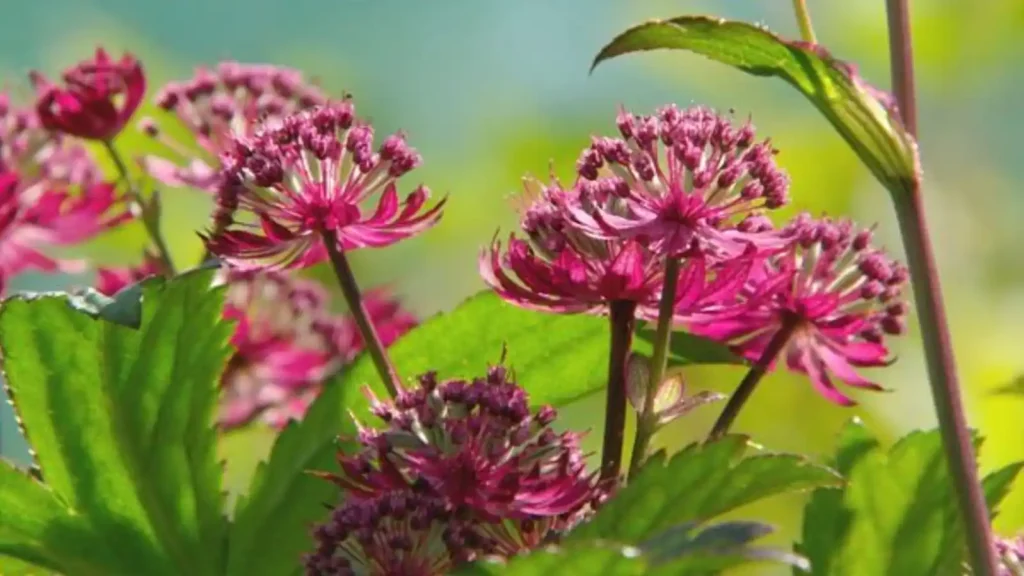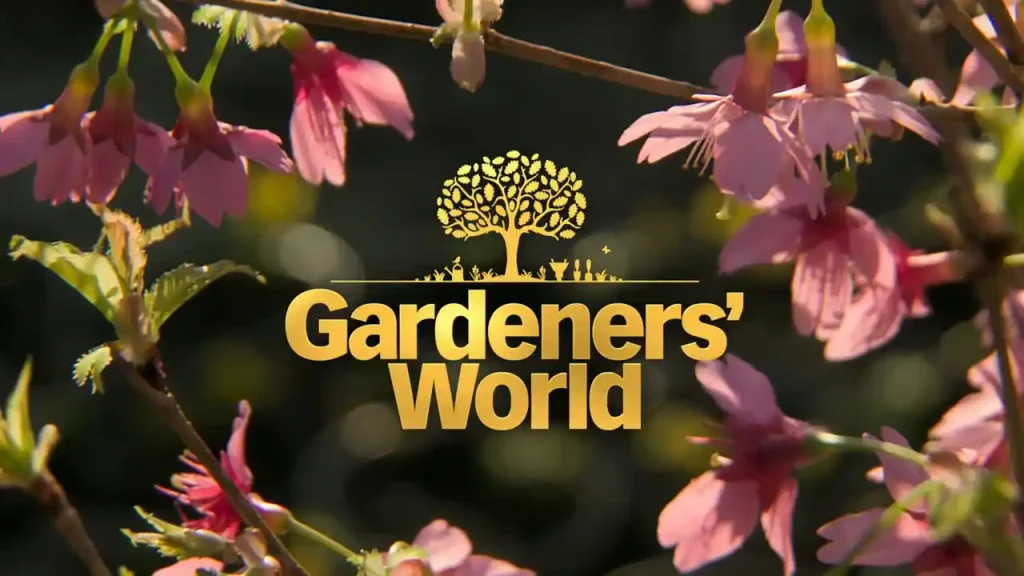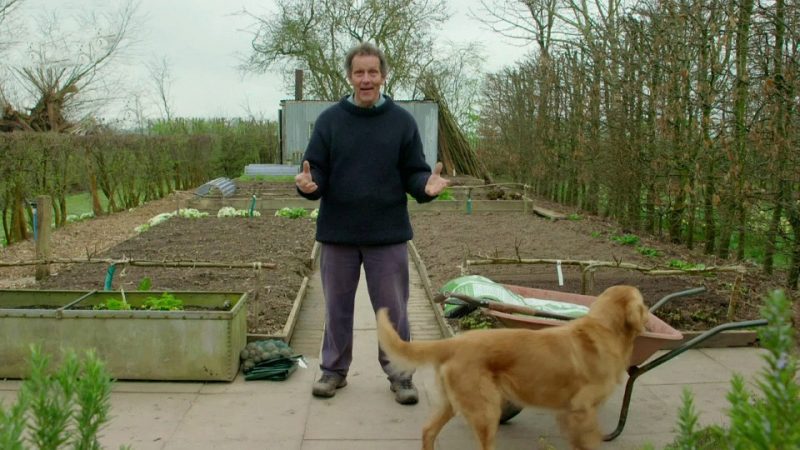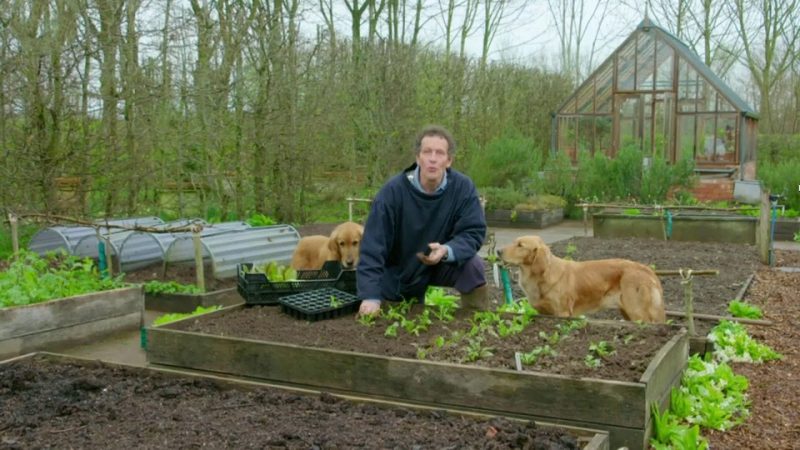In Gardeners World episode 2 2017, Monty Don focuses on preparing the garden for the vibrant season ahead. He meticulously mulches the borders, enriching the soil to ensure a bountiful spring bloom. Alongside this essential task, Monty dedicates time to potting up dahlias, setting the stage for a stunning display of these beloved flowers throughout the year. The episode also highlights the expertise of Carol Klein, who passionately celebrates her plant of the month—the daffodil. Carol delves into the rich history and varieties of this iconic spring flower, offering viewers valuable tips on cultivation and care to achieve the best blooms.
Adding an international flair, Frances Tophill ventures to the Andromeda Botanic Gardens in Barbados, where she volunteers to enhance her horticultural skills. Frances immerses herself in the tropical paradise, learning unique gardening techniques and gaining inspiration from the exotic plant collections, which she eagerly shares with the audience.
In a special segment commemorating the programme’s 50th anniversary, Nick Bailey takes a reflective look at the plants that have shaped British gardens over the past fifty years. He unveils his choice for the most impactful plant, providing historical context and discussing its enduring influence on garden design and horticultural practices across the nation.
Throughout the episode, the presenters blend practical gardening advice with engaging stories, capturing the essence of what has made Gardeners’ World a beloved staple for half a century. The show’s dedication to nurturing a love for gardening, coupled with its celebration of both traditional and innovative techniques, continues to inspire seasoned gardeners and novices alike.
In this episode, viewers are treated to a blend of local expertise and global exploration, illustrating the diverse and dynamic nature of gardening. Whether it’s Monty Don’s hands-on preparations, Carol Klein’s enthusiastic daffodil showcase, or Frances Tophill’s adventurous learning in Barbados, the episode offers a rich tapestry of horticultural knowledge and inspiration. Nick Bailey’s reflective anniversary segment further enriches the programme, cementing its legacy as a trusted source of gardening wisdom and joy.
Gardeners World episode 2 2017
Dahlia care
Dahlias make great cut flowers and add a welcome splash of colour to the garden in late summer. If you’ve never grown them before or have some tubers in storage, then now’s the time to kick-start them into action. Monty Don shows you how. Dahlias are beautiful and vibrant flowers that come in a variety of colors and sizes, making them a popular choice for gardens. However, caring for dahlias can be a bit of a challenge, especially if you are a beginner. In this article, we will discuss the basics of dahlia care, including how to plant, water, fertilize, and prune your dahlias.
Planting Dahlias
Dahlias are best planted in well-draining soil in a location that receives full sun. Plant your dahlias after the last frost, which is typically in late spring or early summer. Dig a hole that is about 6 inches deep and wide enough to accommodate the dahlia tuber. Place the tuber in the hole with the “eyes” facing up and cover it with soil.
Watering Dahlias
Dahlias need regular watering, especially during the growing season. Water your dahlias deeply once a week, making sure to saturate the soil around the roots. Avoid getting water on the leaves or flowers, as this can cause disease. During periods of drought, water your dahlias more frequently.
Fertilizing Dahlias
Dahlias are heavy feeders and require regular fertilization to thrive. Fertilize your dahlias with a balanced fertilizer every 4-6 weeks during the growing season. Avoid using high-nitrogen fertilizers, as these can promote foliage growth at the expense of flower production.
Pruning Dahlias
Pruning is essential for maintaining the health and shape of your dahlia plants. Pinch off the top inch of the stem when the plant reaches 12-18 inches tall. This will encourage branching and a bushier plant. Remove any dead or diseased foliage throughout the growing season. Once the dahlias have finished blooming, cut the stems back to about 6 inches above the ground.
Overwintering Dahlias
Dahlias are not cold-hardy and need to be dug up and stored indoors over the winter in most regions. Wait until after the first frost to dig up the tubers. Carefully remove the soil and cut back the foliage. Allow the tubers to dry for a few days before storing them in a cool, dry place for the winter.
In conclusion, growing dahlias can be a rewarding experience, but it requires some effort and attention to detail. By following the tips outlined in this article, you can grow healthy and beautiful dahlias that will brighten up your garden all season long. Remember to plant in well-draining soil, water deeply and regularly, fertilize every 4-6 weeks, prune for bushiness, and overwinter indoors. With proper care, your dahlia garden can be a source of joy and beauty for years to come.
Mulches and mulching – Gardeners World episode 2 2017
Mulching is generally used to improve the soil around plants, but it also gives your garden a neat, tidy appearance and can reduce the amount of time spent on tasks such as watering and weeding. Mulches help soil retain moisture in summer, prevent weeds from growing and protect the roots of plants in winter. Mulching is a gardening technique that involves covering the soil around plants with a layer of organic or inorganic material. Mulches come in different forms, including wood chips, leaves, straw, grass clippings, stones, and plastic sheets. Mulching has several benefits, such as improving soil quality, conserving moisture, suppressing weed growth, regulating soil temperature, and enhancing the aesthetics of your garden.
Benefits of Mulching
Mulching helps to improve the fertility and texture of the soil. Organic mulches break down over time, releasing nutrients into the soil, which plants absorb. The added organic matter improves soil structure, increasing its water-holding capacity and reducing soil compaction. Mulching helps to conserve moisture by reducing water evaporation from the soil surface. Mulched soils stay moist for longer periods, reducing the frequency of watering. Mulching also helps to regulate soil temperature by insulating the soil from temperature extremes, reducing stress on plants.
Another benefit of mulching is weed suppression. Mulches smother weed seeds, preventing them from germinating and growing. Mulching also helps to control soil erosion by reducing water runoff, which can carry away soil particles.
Types of Mulches
Organic mulches are made from plant materials such as leaves, straw, grass clippings, and wood chips. These mulches decompose over time, enriching the soil and providing a slow-release source of nutrients. Organic mulches are ideal for vegetable gardens and flower beds. Inorganic mulches are made from materials such as stones, gravel, and plastic sheets. They do not break down, making them a low-maintenance option. Inorganic mulches are ideal for walkways, driveways, and permanent plantings such as shrubs and trees.
Choosing the right mulch for your garden depends on your soil type, climate, and plants. Organic mulches are ideal for improving soil quality and moisture retention, while inorganic mulches are best for weed suppression and erosion control.
Mulching is an essential gardening practice that has numerous benefits. It helps to improve soil quality, conserve moisture, suppress weed growth, regulate soil temperature, and enhance the aesthetics of your garden. Choose the right mulch for your garden based on your soil type, climate, and plants. With proper mulching, you can create a healthy and beautiful garden that thrives year-round.
Mushroom compost – Gardeners World episode 2 2017
Mushroom compost can often be bought cheaply in bulk for use as a soil conditioner or mulch. It is usually available as ‘spent’ mushroom compost, referring to the fact it is the compost left over from mushroom farming. Are you looking for a way to improve your soil’s health and boost your plant’s growth? Look no further than mushroom compost! This organic material is a byproduct of mushroom production and is an excellent soil amendment that can benefit your garden in numerous ways.
What is Mushroom Compost?
Mushroom compost is a substrate made from a blend of organic materials such as straw, hay, corn cobs, and poultry or horse manure. These ingredients are pasteurized and sterilized to kill off any harmful bacteria or pathogens. Once the substrate is prepared, it is inoculated with mushroom spores, and over a period of several weeks, the spores grow and consume the organic materials, transforming them into rich, dark compost.
Why Use Mushroom Compost?
Mushroom compost is an excellent soil amendment that provides numerous benefits to your garden. Firstly, it is rich in nutrients such as nitrogen, phosphorus, and potassium, which are essential for plant growth. Secondly, it contains beneficial microorganisms that help break down organic matter in the soil and improve soil structure, aeration, and water-holding capacity. Finally, it can suppress soil-borne diseases and pests, making it an excellent natural alternative to chemical fertilizers and pesticides.
How to Use Mushroom Compost?
Mushroom compost can be used in various ways, depending on your gardening needs. It can be added to existing soil to improve its quality, used as a top dressing around plants, or mixed with other soil amendments such as peat moss or vermiculite to create a custom soil mix. It is important to note that mushroom compost is a potent fertilizer, and it should be used in moderation to avoid over-fertilizing your plants.
Tips for Using Mushroom Compost
When using mushroom compost, it is essential to follow these tips to ensure optimal results:
- Always wear gloves and a mask when handling mushroom compost, as it can contain harmful bacteria and spores.
- Mix mushroom compost with other soil amendments in a ratio of 1:1 to create a well-balanced soil mix.
- Use mushroom compost sparingly, as it is a potent fertilizer and can burn your plants if used in excess.
- Water your plants regularly after applying mushroom compost to help activate the beneficial microorganisms in the soil.
Mushroom compost is an excellent soil amendment that provides numerous benefits to your garden. It is rich in nutrients, contains beneficial microorganisms, and can suppress soil-borne diseases and pests. By using mushroom compost, you can improve your soil’s health, boost your plant’s growth, and create a thriving garden ecosystem. So, next time you’re looking for a natural and sustainable way to improve your soil’s quality, give mushroom compost a try!
Rose pruning: general tips
These general tips for rose pruning will help you improve the health and lifespan of any rose. Rose pruning is an essential part of maintaining healthy and beautiful rose bushes. It can seem daunting to the uninitiated, but with a few general tips, you can prune your roses like a pro and encourage them to grow stronger and more vibrant.
Timing
Timing is crucial when it comes to rose pruning. The best time to prune roses is during late winter or early spring when they are still dormant. In warmer climates, this can be as early as January or February, while in colder regions, it may be closer to March or April. Pruning during this time ensures that the roses will have plenty of time to recover before the growing season begins.
Tools
Having the right tools is essential for successful rose pruning. You will need a pair of sharp pruning shears or loppers, a pair of thick gardening gloves to protect your hands from thorns, and disinfectant spray to prevent the spread of disease between plants. Make sure your tools are clean and sharp before you begin pruning.
Technique
When pruning roses, there are a few key techniques to keep in mind. Start by removing any dead, diseased, or damaged wood. Cut back to a healthy bud or branch, making a clean cut at a 45-degree angle. Next, remove any crossing or rubbing branches, as these can cause damage and create a breeding ground for pests and diseases.
Shape
The shape of your rose bushes will depend on the type of rose you have and your personal preferences. However, in general, it’s a good idea to prune your roses to encourage an open, vase-like shape. This allows light and air to circulate freely around the plant, reducing the risk of disease and promoting healthy growth.
Maintenance
Regular maintenance is key to keeping your roses healthy and beautiful throughout the growing season. Deadhead spent blooms regularly to encourage more flowers, and remove any diseased or damaged wood as soon as you notice it. Water your roses deeply and regularly, and fertilize them with a balanced fertilizer once a month during the growing season.
Grow peas
Peas are grouped by harvesting time and the shape of the seeds; round peas tend to be hardier than wrinkled varieties. Water well when the flowering begins and two weeks after. Add a mulch around the base of plants to preserve soil moisture.
Apart from dwarf cultivars, you will need to provide some support for the plants to scramble up. One of the easiest way of supporting taller varieties is adding trellis, bamboo canes and netting. Dwarf varieties can be supported with pea netting or pea sticks (twiggy branches). After flowering, plants need sufficient water for the pods to swell properly. Check the soil moisture at root level to find out if the plants are getting enough water.
Ornamental grasses: cutting back
Ornamental grasses fall into two main groups, evergreen and deciduous. Deciduous grasses need cutting back annually so that they will look their best. Evergreens just require a tidy-up. Ornamental grasses are a beautiful and low-maintenance addition to any garden. They add texture, movement, and interest to your landscape throughout the year. However, to keep your ornamental grasses looking their best, it is essential to cut them back at the right time.
Timing
The best time to cut back your ornamental grasses depends on the type of grass you have. Cool-season grasses, such as fescue and blue oat grass, should be cut back in early spring before new growth appears. Warm-season grasses, such as switchgrass and miscanthus, should be cut back in late winter or early spring, just before new growth begins.
Tools
Cutting back ornamental grasses requires a few essential tools, including sharp pruning shears, gloves to protect your hands, and eye protection. You may also want to consider wearing a long-sleeved shirt to protect your arms from any sharp edges.
Technique
When cutting back ornamental grasses, it is essential to use the right technique to avoid damaging the plant. Start by tying the grass together with a piece of twine or a bungee cord. This will help you see where you need to cut and prevent the grass from flopping around while you work.
Next, use your pruning shears to cut the grass back to about 2-3 inches above the ground. Cut at a slight angle to prevent water from collecting on the cut end, which can cause rot. Avoid cutting too close to the ground, as this can damage the plant’s crown and roots.
Cleanup
After you have cut back your ornamental grasses, it is important to clean up the debris. Use a rake or leaf blower to gather up any dead leaves, stems, or seed heads that have fallen to the ground. This will help prevent pests and diseases from overwintering in the debris and keep your garden looking neat and tidy.
Conclusion – Gardeners World episode 2 2017
Cutting back your ornamental grasses is an essential part of their care and maintenance. By pruning them at the right time, using the proper technique, and cleaning up after the job is done, you can keep your grasses looking healthy and beautiful year after year. So, grab your tools, put on your gloves, and get ready to give your ornamental grasses the care they deserve.




